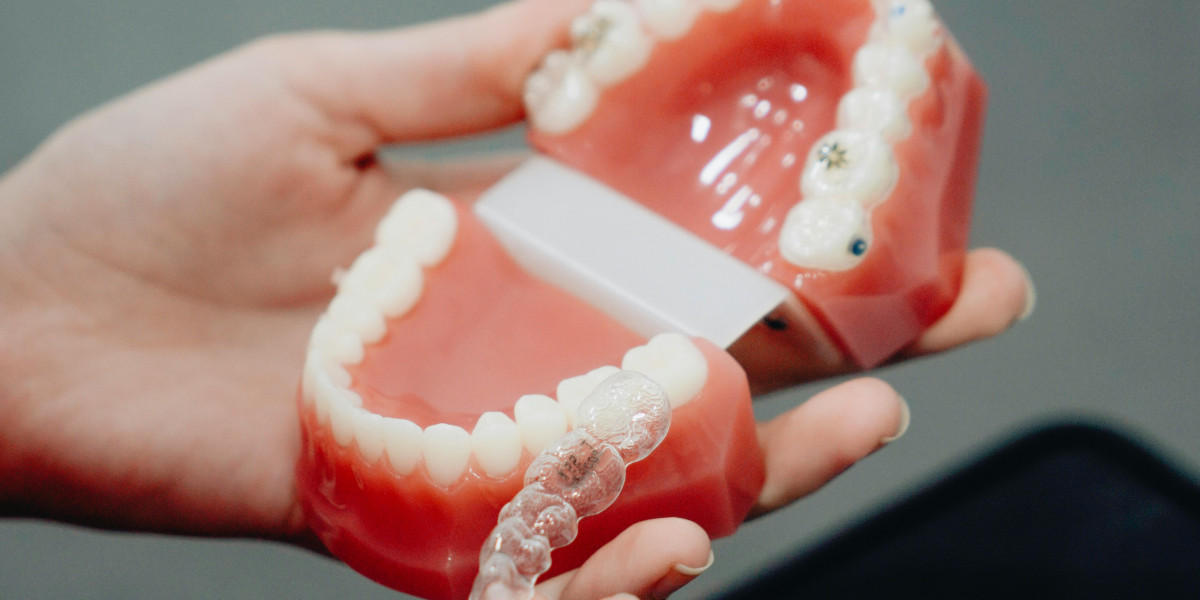Direct-to-consumer (DTC) clear aligners have become popular because they are a convenient and often cheaper way to straighten teeth compared to traditional braces. These aligners can straighten your teeth without needing many visits to the dentist or orthodontist. But do they really work? In this blog, we’ll explain how DTC clear aligners work, their benefits, their limitations, and whether they might be a good choice for getting a straighter smile.
How Direct-to-Consumer Clear Aligners Work
Direct-to-consumer (DTC) clear aligners help straighten your teeth using a series of custom-made, removable trays. Here’s how the process usually works:
1. Initial Assessment
Direct-to-consumer (DTC) clear aligners straighten your teeth using a series of custom-made, removable trays. The process begins with an initial assessment, where many DTC aligner companies use an online quiz to see if you might be a good fit for their aligners. After that, you’ll receive an impression kit at home, which includes putty and trays to help you make accurate molds of your teeth.
2. Treatment Plan
Once you send back the impressions, the company creates a 3D model of your teeth. They then develop a personalized treatment plan and provide a digital preview showing how your teeth will move over time. This helps you see what to expect from the treatment before you start.
3. Aligner Production
The aligners are made just for you based on your treatment plan. They are made to fit perfectly over your teeth and slowly move them into the right position.
4. Wearing Aligners
You need to wear the aligners almost all day and night. You should only take them out when eating, drinking, or brushing your teeth. Every few weeks, you'll get a new set of aligners as your teeth shift into place.
5. Monitoring Progress
Some companies let you check in with a dentist online to see how your treatment is going. However, not all companies offer regular check-ups.
Benefits of Direct-to-Consumer Clear Aligners
Convenience
With direct-to-consumer clear aligners, most of the process happens at home, so you don’t need to visit the dentist’s office often. You can take impressions of your teeth, receive your aligners, and keep track of your progress all from the comfort of your home.
Cost-Effective
Clear aligners from direct-to-consumer companies usually cost less than traditional braces or aligners you get from an orthodontist. This makes them a good choice if you’re looking to save money.
Aesthetic Appeal
Clear aligners are much less noticeable than metal braces, which makes them a favorite option for both adults and teens who prefer a more discreet way to straighten their teeth.
Comfort
Clear aligners can be removed, unlike traditional braces. This makes it easier to eat and clean your teeth, which can help keep your mouth healthier.
Limitations of Direct-to-Consumer Clear Aligners
Complex Cases
Direct-to-consumer clear aligners work well for simple to moderate teeth straightening issues. However, they may not be suitable for more complicated cases like severe overcrowding or major bite problems, which often need more detailed treatment from an orthodontist.
Lack of In-Person Supervision
A big drawback is that you don’t get regular check-ups with an orthodontist. Traditional braces or aligners involve frequent visits to the dentist to adjust and monitor your progress, which helps spot and fix any problems early.
Possible Complications
Without regular professional checks, there’s a risk that problems might go unnoticed or your aligners might not fit correctly. This could lead to complications or less effective results.
Limited Customer Support
Some direct-to-consumer companies don’t offer much support. If you run into problems or need adjustments, having less access to help can be a disadvantage.
Effectiveness Concerns
The success of direct-to-consumer clear aligners can vary. Some people get great results, but others might not achieve the improvement they hoped for. The effectiveness depends on the company and your specific teeth alignment needs.
Comparison with Traditional Orthodontic Treatment
Customization
Traditional braces are adjusted by an orthodontist during your treatment. This allows them to be customized to handle a range of dental issues easily. In contrast, direct-to-consumer (DTC) aligners are custom-made, but they don’t get the same hands-on adjustments from a professional, which can limit their ability to address complex problems.
Professional Supervision
With traditional braces, you have regular in-person visits to an orthodontist who can monitor your progress, make necessary adjustments, and quickly solve any issues. This close supervision helps ensure that your treatment stays on track. On the other hand, DTC aligners usually involve remote or minimal supervision, which means that any problems might not be noticed until later, potentially affecting the final results.
Treatment Duration
The length of treatment with traditional braces can vary, but they are often effective for complex cases and might provide faster results for some issues. DTC aligners generally work well for simpler cases but might take longer to correct more complicated problems.
Conclusion
Direct-to-consumer clear aligners can be a good option for certain orthodontic issues, especially if you have mild to moderate teeth alignment problems. They offer the advantage of being convenient and cost-effective, and they are less visible than traditional metal braces, which many people find appealing. However, they might not be the best choice for more complex dental issues because they lack the in-person supervision provided by orthodontists.
Without regular check-ups, it’s harder to catch and address potential problems early, which could impact the overall results of your treatment. Therefore, if you’re thinking about using DTC clear aligners, it’s wise to consult with a dentist or orthodontist to discuss your specific dental needs and ensure that aligners are a suitable choice for you.
If you’re looking for good care, you might consider visiting a local dentist like those at Brush365. Searching for a ‘dentist near me’ will also help you find a qualified professional who can provide expert help to you.



